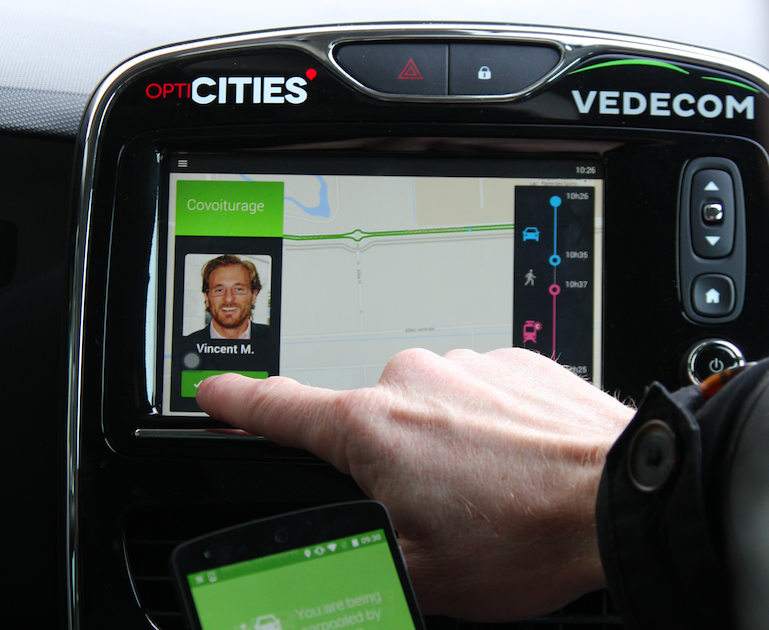
Photo: Screen-Shot-2016-09-29-at-09.35.10
How a European project is taking mobility data back from Google
29 September 2016
by Jonathan Andrews
Steve Hoare spoke to the leaders of the European Commission’s flagship Opticities programme
The Opticities project has brought together the cities of Lyon, Birmingham, Gothenburg, Madrid, Turin and Wroclaw with 19 other partners (technology suppliers, car manufacturers, research labs and industry networks) to test cutting edge intelligent transport system solutions that can be replicated across Europe.
The project is being led by the French city of Lyon and its deputy head of urban mobility service Jean Coldefy. It is being coordinated by EUROCITIES’ urban mobility project coordinator Peter Staelens. Coldefy says the key aim of the project is to gather all the available data on the cities’ transport systems (including roads, trains, buses, freight, accidents, parking and much more), package it up and make it available to third parties so they can build mobility services such as mobile phone apps.
“We need standards and should not leave open data to Google,” said Coldefy. “We need to create a business model rather than let Google take all the data and then sell it back to us. We want to encourage start-ups and SMEs. In France, we want to create a new business model with the private sector. ere is a crisis in public funding that will last decades and we need to fill that gap.”
The European Commission invested €13 million in the project, which started in 2013, with the aim of building a platform for 50 or 100 cities and many more private sector companies to benefit from its research.

“Start-ups are wonderful with technology but very bad with mobility and analysis,” added Coldefy. “We will work very hard with them to make sure it can work. We provide the data and then work with them to establish new services.”
However, all involved want to stress that Opticities is not just another research and development project. It is also about deployment.
The most obvious example of this is Optimod’Lyon, an information platform that has allowed Lyon and its technology partners to launch three major services: a one-hour traffic prediction tool, an urban navigator on mobile phones and a navigator for urban freight.
Birmingham came relatively late to the project and initiated its urban mobility plan in 2014.
Its aim was to ensure that people and freight could move around the city more efficiently. However, there is also the issue of air quality in the city and with 81,000 new homes being built by 2031 and 150,000 new residents expected, these issues need to be addressed quickly.
Steve George, the project leader, says Birmingham has benefited from the hard work Lyon has put in. One of Birmingham’s achievements has been building a system that sends alerts to the traffic control centre about road incidents is is having an impact on the city’s traffic management strategies and it is something that he would like to see rolled out beyond the city limits and across the greater West Midlands area.
“It is strategically important for the West Midlands,” said George. “The platform has to be reliable and accurate and it’s only as accurate as the data that goes into it.”
This is where the Opticities data platform comes in. Andrew Radford, Birmingham City Council’s officer for Opticities, explains that there are six key datasets the project is focusing on: car parking, traffic prediction, real time incidents, traffic flow, journey times and planned incidents. The aim is to produce a multi-modal routing app–something that Lyon has produced already. However, this is just the beginning.
“The imagination should have no limits,” concludes Coldefy. “When you have access to all this data, there are no limits.”







